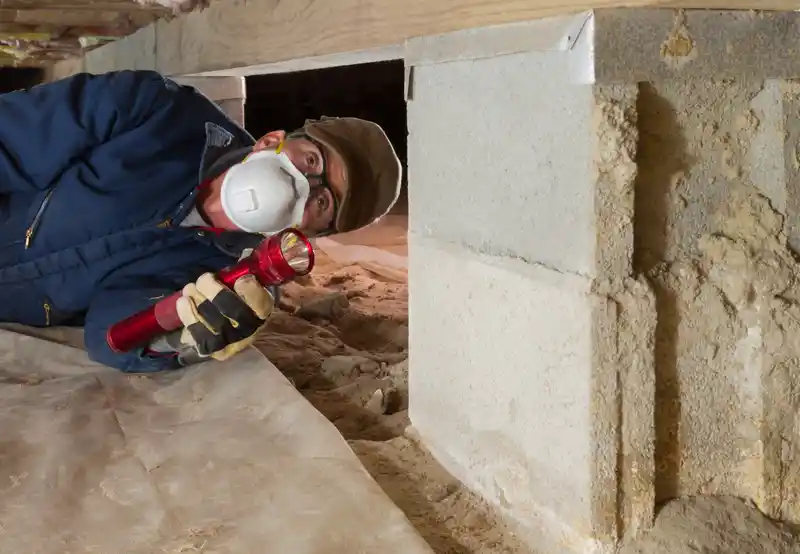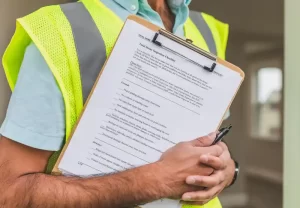A building pest inspection is a crucial step when buying, selling, or maintaining a property. It provides a comprehensive assessment of the structural condition of a home while identifying potential pest infestations, ensuring your investment remains safe and valuable. Many homeowners underestimate the importance of preparation for this inspection, which can lead to incomplete or inaccurate reports.
Preparing your home properly for an inspection helps the inspector access all necessary areas, reducing the risk of hidden issues. Simple steps like decluttering, fixing minor damages, and ensuring utility access can make a significant difference in the thoroughness of the evaluation. By following a structured approach to preparation, you can increase the chances of a smooth inspection process and a favourable report.
In this guide, we will walk you through the essential steps to get your home ready for a building pest inspection. From decluttering to minor repairs, eliminating pest attractants, and understanding what inspectors look for, we cover all the necessary details to ensure a seamless experience. Whether you are a homeowner preparing for an annual check-up or a seller looking to make your property more appealing to buyers, these tips will help you achieve the best results.
Why Proper Preparation is Important
Getting your home ready for a building and pest inspection ensures a smoother and more accurate process with fewer disruptions. Proper preparation helps:
- Ensure a more accurate inspection report – When all areas of the property are accessible and in order, inspectors can conduct a thorough assessment without missing crucial details.
- Reduce delays – Inaccessible spaces, missing documentation, or unprepared properties can lead to inspection rescheduling, delaying the buying or selling process.
- Create a better impression for potential buyers – A well-maintained home with a clean inspection report can boost buyer confidence and potentially lead to a faster sale.
- Lower the risk of unexpected costly repairs – Identifying issues early allows sellers to address minor concerns before they escalate, preventing expensive repairs later on.
What Inspectors Look for During an Inspection
During a building pest inspection, professionals examine various aspects of a property to identify potential concerns. The primary areas of focus include:
1. Structural Integrity
A property’s structural integrity is one of the most crucial elements inspected. Inspectors assess:
- Walls, ceilings, and floors for cracks, sagging, or weaknesses.
- The foundation for subsidence, uneven settling, or signs of deterioration.
- Load-bearing structures to ensure they are in good condition and meet safety standards.
- Roofing materials and framing for stability and durability.
Even minor structural issues can lead to significant safety hazards and costly repairs if not addressed early.
2. Pest Infestations
Pests, particularly termites, can cause serious damage to wooden structures, compromising the safety and longevity of the property. Inspectors look for:
- Visible termite damage in wooden structures, floors, and walls.
- Pest droppings or signs of rodent activity.
- Entry points where pests may be infiltrating the home.
- Previous pest treatments and their effectiveness.
Detecting pest activity early helps homeowners take preventive action before infestations worsen.
3. Roof Condition
A well-maintained roof is essential for protecting the home from water damage, leaks, and weather-related wear and tear. Inspectors evaluate:
- Roof shingles, tiles, or metal sheets for cracks, missing sections, or deterioration.
- Gutters and downspouts for blockages or poor drainage.
- Signs of water intrusion that could indicate roof leaks.
A compromised roof can lead to major internal damage if left untreated.
4. Moisture and Drainage Issues
Water damage and excessive moisture can weaken the home’s foundation and create an ideal environment for termites and mould growth. Inspectors assess:
- Dampness in walls, ceilings, or floors that may indicate plumbing leaks.
- Poor drainage systems that cause water pooling around the foundation.
- Mould or mildew growth due to high humidity levels.
Unaddressed moisture problems can lead to long-term structural damage and health concerns.
5. Ventilation and Airflow
Proper ventilation is critical for maintaining indoor air quality and preventing moisture buildup. Inspectors check:
- Attics and crawl spaces to ensure they are well-ventilated.
- Underfloor spaces to prevent damp conditions that attract pests.
- Overall airflow efficiency to ensure a comfortable and mould-free living environment.
Good ventilation reduces the risk of mould, rot, and other issues that can compromise the home’s integrity.
Steps to Prepare Your Home for an Inspection
1. Ensure Easy Access to All Areas
Inspectors need to examine all parts of the property, including:
- Interior rooms – Ensure doors and windows open easily.
- Roof and attic – Clear access to attic hatches and remove any obstructions.
- Crawl spaces – Provide entry to basements, underfloor spaces, and ventilation areas.
- Garage and sheds – Unlock and declutter these areas for easy inspection.
2. Declutter Your Home
Obstructions can make inspections difficult, so it’s essential to tidy up. Pay attention to:
- Moving furniture away from walls.
- Organising storage areas.
- Trimming plants near the exterior walls.
3. Address Minor Repairs in Advance
Fixing small issues can prevent red flags in the inspection report. Consider:
- Repairing leaky faucets.
- Sealing cracks in walls and floors.
- Replacing damaged screens and fixing window seals.
4. Eliminate Pest Attractants
To minimise the chances of a pest infestation being found:
- Remove food waste and seal all trash bins.
- Fix leaks that create moisture buildup.
- Trim vegetation that provides shelter for pests.
- Ensure pet food is stored properly.
5. Provide Documentation
Having records of past inspections, renovations, or pest treatments can be helpful. Keep documents such as:
- Termite control history.
- Roof repair invoices.
- Plumbing maintenance records.
6. Ensure Utilities Are Connected
The inspector will need access to water, gas, and electricity to test systems such as:
- Plumbing for leaks and water pressure.
- Heating and Cooling units for efficiency and performance.
- Electrical circuits and outlets for safety compliance.
7. Inform Occupants and Pets
For a smooth inspection:
- Notify tenants or family members about the scheduled visit.
- Secure pets in a safe location to avoid disruption.
Common Issues Found During Building and Pest Inspections
| Issue | Potential Impact |
| Termite damage | Weakens structural integrity |
| Roof leaks | Causes water damage & mould |
| Foundation cracks | Leads to stability concerns |
| Poor drainage | Attracts pests & causes erosion |
| Electrical faults | Safety hazards & fire risks |
Conclusion
Preparing your home for a building pest inspection is a crucial step in maintaining its value and ensuring structural integrity. Proper preparation allows inspectors to perform their job efficiently, leading to a more accurate report and fewer surprises. By decluttering, addressing minor repairs, ensuring utilities are functioning, and eliminating pest attractants, homeowners can improve their chances of a successful inspection outcome.
For sellers, a well-prepared property can enhance its marketability, while buyers benefit from knowing exactly what they’re investing in. Regular inspections and proactive maintenance are key to keeping a property in excellent condition, preventing costly future repairs.
At One Stop Inspections, we offer thorough and professional building and pest inspections in Adelaide. Our licensed and insured inspectors provide detailed reports, ensuring that you have the knowledge you need to make informed decisions.




